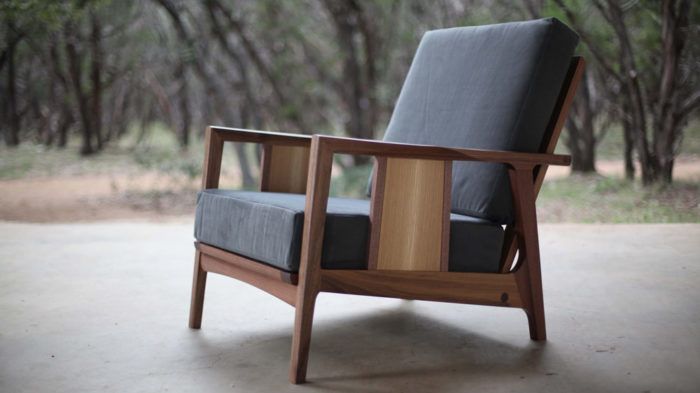It’s in the Details
Philip Morley discusses subtle details that some clients may not notice or appreciate. They take the most time and make it harder to make a living at woodworking, but he can't help himself.
When I first set out to design this lounge chair, the client gave me free range. Of course, this is always the best-case scenario for a furniture maker and I love the feeling of full creative license. As a shop owner trying to make ends meet, conversations with fellow furniture makers floated through my head. These conversations are generally centered on this question: Are certain details included just for the satisfaction of the furniture maker himself and/or other furniture makers? If the details are only important to us, is it logical to include such details when designing furniture for a business?
The details I’m talking about are those minute considerations that some clients may not notice or appreciate. They take the most time and make it harder to make a living at woodworking.
I started designing this chair with that conversation in mind. This particular design is obviously not something super original. It is heavily grounded in Mid-Century Modern design, which is the aesthetic I am typically drawn to. Within that framework, I fully intended to keep the design simple by keeping everything on the same plane and adding no subtle details or edge profiles. . . . you know, all those nuances that add time and expense. Who would notice those details anyway?
But once I started getting into the design, I found that I just could not do it. While the practicalities of trying to run a business are still there, I simply cannot design a piece that is not for me at some level. Why? Multiple reasons! For one, it is just not fun if I am not including all those elements that excite me. More practically, I cannot compete with mass-produced items on price anyway (nor would I want to) so I need to stick with what makes my work worthwhile.
While the craftsmanship certainly sets my work apart from factory-produced pieces, I can only conclude that it is those details that really make the difference. I know this from the pieces of handcrafted work by other craftsmen that I have in my own home, whether is pottery, textiles, or woodwork. The difference is a communication between the craftsman, the owner, and every other person who connects with the piece. That subconscious conversation is communicated through those unique, subtle details that flow from the mind of the creator to the rest of the world.
Maybe the client does not initially notice these small details: the pillowing of edges, the hand-shaped edges, the hand-shaped profiles and the skillful maintenance of hard lines. But I realized that even if the client does not consciously recognize the details of the piece, hopefully what they do glean from the piece is that it has a beautiful and unique presence in their home. As they live with the piece, sit with it, and run their hands over it, they slowly start to pick up on those subtle details . That unique and very human communication of aesthetics and skill is highlighted throughout.
Making a piece of furniture not just a functional tool in a house but is essential to the essence of a home. I have been fortunate enough to find discerning clients who are willing and able to value that distinction.
Fine Woodworking Recommended Products

Drafting Tools

Dividers

Drafting Tools































Comments
Beautiful design!
Jurgen nailed it. Excellent design and work.
Stunning
Log in or create an account to post a comment.
Sign up Log in